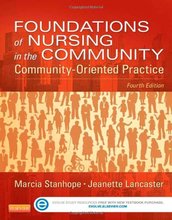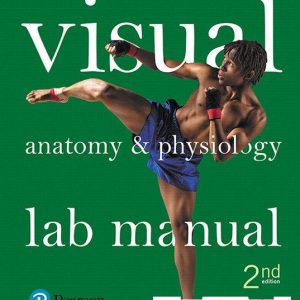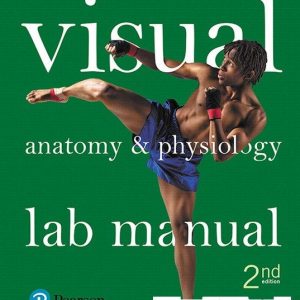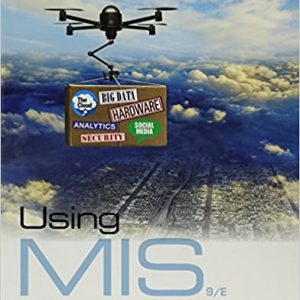Foundations of Nursing in the Community Community-Oriented Practice Stanhope 4th Edition Test Bank

People also search:
Foundations of Nursing in the Community Community-Oriented Practice
Foundations of Nursing in the Community Community-Oriented Practice Stanhope Lancaster
Foundations of Nursing in the Community Community-Oriented Practice Stanhope Lancaster 4th
Foundations of Nursing in the Community Community-Oriented Practice Stanhope Lancaster 4th Test Bank
Foundations of Nursing in the Community Community-Oriented Practice Stanhope 4th Edition Test Bank
Description:
Chapter 01: Community-Oriented Nursing and Community-Based Nursing
Test Bank
MULTIPLE CHOICE
1. Which of the following best describes community-based nursing?
a. A philosophy that guides family-centered illness care
b. Providing care with a focus on the group’s needs
c. Giving care with a focus on the aggregate’s needs
d. A value system in which all clients receive optimal care
ANS: A
By definition, community-based nursing is nursing that focuses on family-centered illness care to individuals and families in the community.
DIF: Cognitive Level: Understand (Comprehension) REF: p. 2-3
2. Which of the following best describes community-oriented nursing?
a. Focusing on the provision of care to individuals and families
b. Providing care to manage acute or chronic conditions
c. Giving direct care to ill individuals within their family setting
d. Having the goal of health promotion and disease prevention
ANS: D
By definition, community-oriented nursing has the goal of preserving, protecting, or maintaining health to promote the quality of life. All nurses may focus on individuals and families, give direct care to ill persons within their family setting, and help manage acute or chronic conditions.
DIF: Cognitive Level: Understand (Comprehension) REF: pp. 2, 10
3. Which of the following is the primary focus of public health nursing?
a. Families and groups
b. Illness-oriented care
c. Individuals within the family unit
d. Promotion of quality of life
ANS: D
The key difference between community-based and community-oriented nursing is that community-based nurses deal primarily with illness-oriented care, whereas community-oriented nurses—or public health nurses—provide health care to promote quality of life.
DIF: Cognitive Level: Understand (Comprehension) REF: p. 2
4. Which of the following is responsible for the dramatic increase in life expectancy during the twentieth century?
a. Technology increases in the field of medical laboratory research
b. Advances in surgical techniques and procedures
c. Sanitation and other public health activities
d. Use of antibiotics to fight infections
ANS: C
Improvement in control of infectious diseases through immunizations, sanitation, and other public health activities led to the increase in life expectancy from less than 50 years in 1900 to more than 77 years in 2002.
DIF: Cognitive Level: Remember (Knowledge) REF: p. 2
5. A nurse is developing a plan to decrease the number of premature deaths in the community. Which of the following interventions would most likely be implemented by the nurse?
a. Increase the community’s knowledge about hospice care.
b. Promote healthy lifestyle behavior choices among the community members.
c. Encourage employers to have wellness centers at each industrial site.
d. Ensure timely and effective medical intervention and treatment for community members.
ANS: B
Public health approaches could help prevent about 70% of early deaths by influencing the way people eat, drink, drive, engage in exercise, and treat the environment.
DIF: Cognitive Level: Apply (Application) REF: p. 2
6. Which of the following is a basic assumption of public health efforts?
a. Health disparities among any groups are morally and legally wrong.
b. Health care is the most important priority in government planning and funding.
c. The health of individuals cannot be separated from the health of the community.
d. The government is responsible for lengthening the life span of Americans.
ANS: C
Public health can be described as what society collectively does to ensure that conditions exist in which people can be healthy.
DIF: Cognitive Level: Understand (Comprehension) REF: p. 4
7. Which of the following actions would most likely be performed by a public health nurse?
a. Asking community leaders what interventions should be chosen
b. Assessing the community and deciding on appropriate interventions
c. Using data from the main health care institutions in the community to determine needed health services
d. Working with community groups to create policies to improve the environment
ANS: D
Although the public health nurse might engage in any of the tasks listed, he or she works primarily with members of the community to carry out core public health functions, including assessment of the population as a whole and engaging in promoting health and improving the environment.
DIF: Cognitive Level: Apply (Application) REF: p. 8
8. Which of the following public health nurses most clearly fulfills the responsibilities of this role?
a. The nurse who met with several groups to discuss community recreation issues
b. The nurse who spent the day attending meetings of various health agencies
c. The nurse who talked to several people about their particular health concerns
d. The nurse who watched the city council meeting on local cable television
ANS: B
Any of these descriptions might represent a nurse communicating, cooperating, or collaborating with community residents or groups about health concerns. However, the nurse who spent the day attending meetings of various health agencies is the most representative, because in public health, concerns are broader than recreation, individual concerns are not as important as aggregate priorities, and watching television (a one-way form of communication) is less effective than interacting with others.
DIF: Cognitive Level: Analyze (Analysis) REF: pp. 6-7
9. Which of the following best defines aggregate?
a. A large group of persons
b. A collection of individuals and families
c. A group of persons who share one or more characteristics
d. Another name for demographic group
ANS: C
An aggregate is defined as a collection of people who share one or more personal or environmental characteristics, such as geography or special interest.
DIF: Cognitive Level: Remember (Knowledge) REF: p. 7
10. A registered nurse was just employed as a public health nurse. Which question would be the most relevant for the nurse to ask?
a. “Which groups are at the greatest risk for problems?”
b. “Which patients should I see first as I begin my day?”
c. “With which physicians will I be most closely collaborating?”
d. “With which nursing assistants will I partner the most?”
ANS: A
Asking which groups are at greatest risk reflects a community-oriented perspective. The other possible responses reflect a focus on individuals.
DIF: Cognitive Level: Apply (Application) REF: p. 8
11. Making sure that essential community-oriented health services are available defines which of the core public health functions?
a. Policy development
b. Assessment
c. Assurance
d. Scientific knowledge-based care
ANS: C
Public health is based on scientific knowledge but is not a core function. The definition does not fit the terms assessment or policy development.
DIF: Cognitive Level: Apply (Application) REF: p. 4
12. When talking to a women’s group at the senior citizens’ center, the nurse reminded them that the only way the center would be able to afford to provide transportation services for them would be for them to continue to write letters to their local city council representatives requesting funding for such a service. What was the nurse trying to accomplish through this action?
a. Ensure that the women did not expect the nurse to solve their problem
b. Demonstrate that the nurse understood the women’s concerns and needs
c. Express empathy, support, and concern
d. Help the women engage in political action
ANS: D
Public health nurses engage themselves and others in policy development and encourage and assist persons to communicate their needs to those with the power to take action.
DIF: Cognitive Level: Apply (Application) REF: p. 8
13. The public health nurse has a clear vision of what needs to be done and where to begin to improve the health of the community. Why would the nurse spend time meeting with community groups to discuss the most important task to be addressed first?
a. To increase the group’s self-esteem
b. To maintain communication links with the groups
c. To make the groups feel good about their contribution
d. To work with the groups, not for the groups
ANS: D
Historically, health care providers have been accused of providing care for or to people without actually involving the recipients in the decisions. Public health nursing is a “with the people”—not a “to the people” or “for the people”—approach to planning.
DIF: Cognitive Level: Apply (Application) REF: p. 8
14. The nurse often has to make resource allocation decisions. Which of the following best describes the criterion the nurse should use in such cases?
a. The specific moral or ethical principle related to the situation
b. The cheapest, most economical approach
c. The most rational probable outcome
d. The needs of the aggregate rather than a few individuals
ANS: D
Although all of the choices represent components of a decision that the nurse might consider, the dominant needs of the population outweigh the expressed needs of one or a few people.
DIF: Cognitive Level: Apply (Application) REF: p. 9
15. Which of the following actions best represents public health nursing?
a. Assessing the effectiveness of the large high school health clinic
b. Caring for clients in their home following their outpatient surgeries
c. Providing care to children and their families at the school clinic
d. Administering follow-up care for pediatric clients at an outpatient clinic
ANS: A
A public health or population-focused approach would look at the entire group of children being served to determine whether available services are effective in achieving the goal of improving the health of the school population.
DIF: Cognitive Level: Apply (Application) REF: p. 10
16. Two nurses plan to walk under a huge downtown bridge where various homeless persons live. Why would the nurses go to such an unsafe area?
a. To assess the needs of the homeless who live there
b. To demonstrate their courage and commitment
c. To distribute some of their own surplus clothes to those who can use them
d. To share with various churches and other charities what is needed
ANS: A
In most nursing practices, the client seeks out and requests assistance. In public health nursing, the nurse often reaches out to those who might benefit from a service or intervention, beginning with assessment of needs.
DIF: Cognitive Level: Apply (Application) REF: p. 9
MULTIPLE RESPONSE
1. Which of the following variables have led to a stronger commitment to population-focused services? (Select all that apply.)
a. Economic turmoil and demand for high-technology care
b. Emergence of new or drug-resistant infectious diseases
c. Emphasis on overall health care needs rather than only on acute care treatment
d. Threat of bioterrorism
ANS: B, C, D
As overall health needs become the focus of care in the United States, a stronger commitment to population-focused services is emerging. Threats of bioterrorism, anthrax scares, and the emergence of modern-day epidemics have drawn attention to population-focused safety and services.
DIF: Cognitive Level: Understand (Comprehension) REF: p. 4
2. Which of the following actions demonstrate(s) effective public health nursing practice in the community? (Select all that apply.)
a. Epidemiologic investigations examine the environment for health hazards.
b. New services are organized where particular vulnerable populations live.
c. Partnerships are established with community coalitions.
d. Staff members at the public health agency continue to increase in number.
ANS: A, B, C
Evidence that public health nurses are practicing effectively in the community would include these: organizing services where people live, work, play, and learn; working in partnerships and with coalitions; and participating in epidemiologic studies.
DIF: Cognitive Level: Apply (Application) REF: p. 10
3. Why are nurses increasingly providing care in clients’ homes rather than in hospitals? (Select all that apply.)
a. Home care is less expensive.
b. It is much more efficient to give care in the home.
c. Nurses prefer to give home care with individual attention.
d. People prefer to receive care in their homes rather than in hospitals.
ANS: A, D
An increasing number of clients are receiving care in the home because it is less expensive and clients prefer to receive care in familiar and comfortable settings. It is not more efficient nor more convenient, since travel time has to be considered. Nurses differ as to their preferred employment setting.
DIF: Cognitive Level: Understand (Comprehension) REF: p. 11
Product details:
- ISBN-10 : 9780323100946
- ISBN-13 : 978-0323100946
- Author: Dr. Marcia Stanhope, RN, DSN, FAAN





